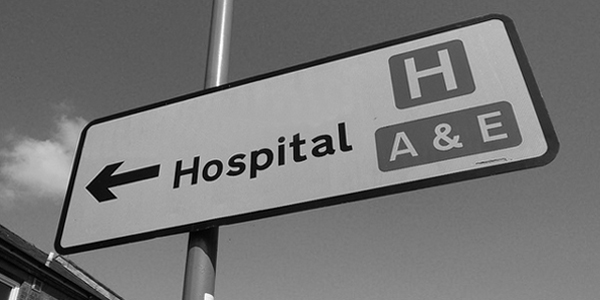Pressures on A&E prove we need integrated care
My alarm is a clock radio. I am woken up by the Today programme, and as I doze in bed there is always a special joy in my heart when I realise that they are running a health story. This...
My alarm is a clock radio. I am woken up by the Today programme, and as I doze in bed there is always a special joy in my heart when I realise that they are running a health story. This morning was particularly special: the BBC’s findings that a small number of people are the heaviest repeat users of A&E. It triggered a “tell us something we don’t know” groan.
Pressures on A&E are growing. Locally, we have a daily 10am conference call between commissioners, hospital, social services and community services to review our status (and I mean every day, including 25th December). We know the statistics of how many people attend, where they are from, how many go on to be admitted to hospital, what condition they attend with. Data, we are not short of. It is workable solutions to complex and time consuming problems.
The A&E four-hour wait target, introduced in 2004, has been a great example of the pros and cons of target setting as a political tool for reform. No doubt, performance has improved dramatically in the last 10 years. I am sure that for 80, maybe 90 per cent of patients that has equated to faster, safe assessment and treatment.
However, it may be true that around the edges it has acted as a perverse incentive for A&E departments to admit those handful of patients who are going to breach the target, warping local service delivery. It has also meant that A&E has become a victim of its own success; you can turn up at an A&E department any time of the day of night and reasonably expect professional advice and help within 4 hours. It is the only free, universal, on demand, 24/7 front door the public sector has. And now it’s faster than ever.
Frankly, we wouldn’t want our accident and emergency departments to be anything less than this, but it is easy to see how they become the pressure valve when other parts of the public sector are being cut. Hospitals cannot solve this problem on their own, neither can the NHS.
What surprised me about today’s coverage then was the rapidity with which the journalists linked the pressure on A&E with the capacity of social services. The idea that health and social care are not totally separate domains, with the hospital master of all it surveys, is spreading. Andy Burnham has talked about the need for a national care service, which overcomes the arbitrary divide between a treatment and a social intervention. These services are already mutually dependant, as today’s reports have shown; now we need them to work more closely together.
So the challenge for policy makers is this: how do we create the climate for integration without major structural reform? The NHS has just been through an upheaval “so big you can see it from space” in the words of Sir David Nicholson. Despite claims that the Health and Social Care Act will be repealed, it realistically impractical to unpick the huge organisational changes which have taken place.
Changing the climate of the NHS is hard. The health service is not one organisation, but a system of many interdependent, moving parts. Various waves of reform have meant that health care is provided by a range of local providers, all NHS organisations, all separate, all with their own board, their own statutory duties and their own requirement to stay financially viable. Simple phrases like “moving money from hospital to community care” are impossible to implement without understanding the financial stability of all the organisations involved, and the potential destabilising effect that shifting investment could mean. I can’t blame a foundation trust from protecting their income; they have staff to pay.
Around 80 per cent NHS health services are funded from one pot of money – that held by CCGs, and yet despite this ‘pooled’ budget we still do not have fully integrated health care. Mental and physical health services can feel very separate (even though in my organisation, the commissioners sit next to each other). Under PCTs there was still a division between care provided by GPs and hospitals, despite having a single commissioner. When faced with organisations forced to defend their own income, changing patterns of investment is complex and time consuming.
We need to learn the lessons from this. If we want genuinely integrated health and social care, we need to do more than pool budgets. In a time of shrinking resources we need to make our existing money work differently. This means moving investment across provider boundaries, from hospitals into nursing homes and social care and from GPs to community nursing. All the pooled budgets in the world aren’t going to help any commissioners of health and social care negotiate a provider landscape that has been designed for competition and promotes organisational survival above all else.
A new national health and care service feels right, but a policy to achieve genuinely integrated care needs to look at changing the climate of the provider organisations (hospitals, GP practices, community healthcare providers, mental health trusts, nursing homes, care homes, social workers and the third sector).
The climate these existing organisations have developed in has been one that promoted independence, competition and reinvesting in their own services; the integrated services of the future need to look beyond their own walls and to invest in other parts of the system (without risking their own services falling over). The next policy step is to define the business rules for this.
